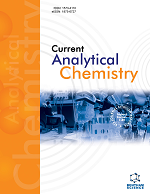
Full text loading...
PYX-106 is a fully human monoclonal antibody (mAb), targeting sialic acid binding immunoglobulin-like lectin-15 (Siglec-15), an immunosuppressive agent with widespread expression across various tumor types.
To facilitate the evaluation of immunogenicity for PYX-106 in human serum, a validated method was established to enable the detection (screening, confirmatory, and titration) of antibodies to PYX-106 in human serum samples.
The Screening Cut-Point Factor (SCPF), Confirmatory Cut-Point (CCP), and Titration Cut-Point Factor (TCPF) were found to be 1.51, 26.9%, and 1.86, respectively. Sensitivity was determined to be 1.81 ng/mL in the screening assay and 1.25 ng/mL in the confirmatory assay. Low Positive Control (LPC) was set at 6.00 ng/mL, and High Positive Control (HPC) was set at 1000 ng/mL. The drug tolerance was up to 500 µg/mL at the HPC level, up to 241 µg/mL at the ADA 100 ng/mL level, and up to 38.9 µg/mL at the LPC level. The intra-assay percent coefficient of variation (%CV) was ≤ 2.1% for Positive Controls (PCs) in the screening assay and ≤ 1.0% for PCs in the confirmatory assay. The inter-assay %CV was ≤ 15.3% for PCs in the screening assay and ≤ 2.1% for PCs in the confirmatory assay. No hook effect, hemolysis effect, lipemia effect, or bilirubin interference was found in this ADA method. Anti-PYX-106 antibodies were found stable in human serum for at least 23 hours 51 minutes at room temperature or after six freeze/thaw cycles.
Anti-PYX-106 ADA bioanalytical assay validation was reported for the first time in any biological matrix. This ADA method has been successfully applied to human sample analysis to support a clinical study.

Article metrics loading...

Full text loading...
References


Data & Media loading...

